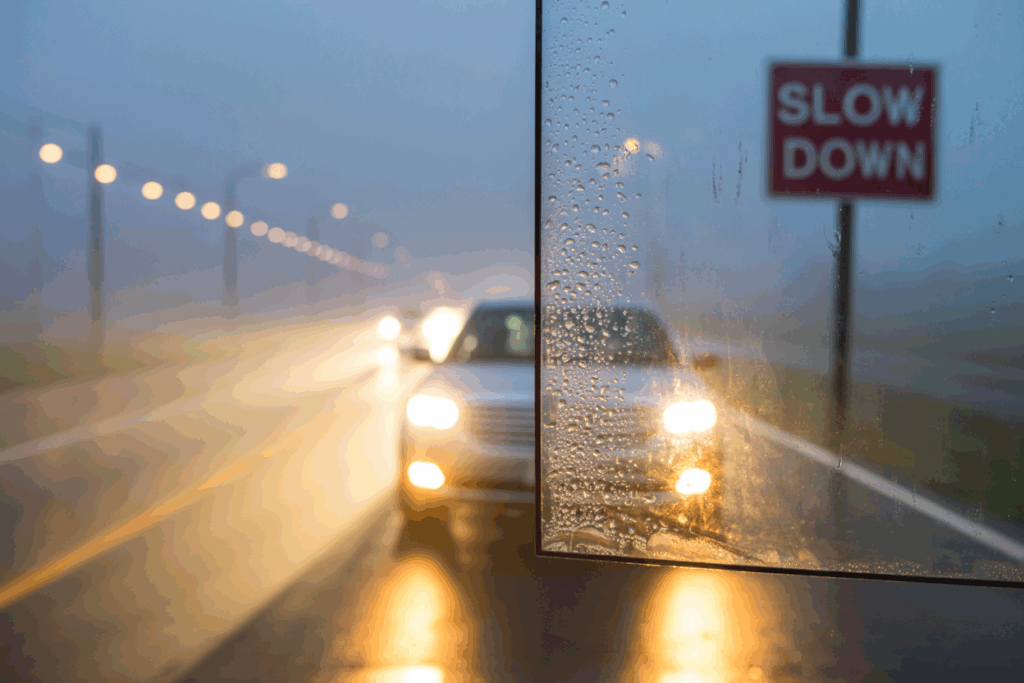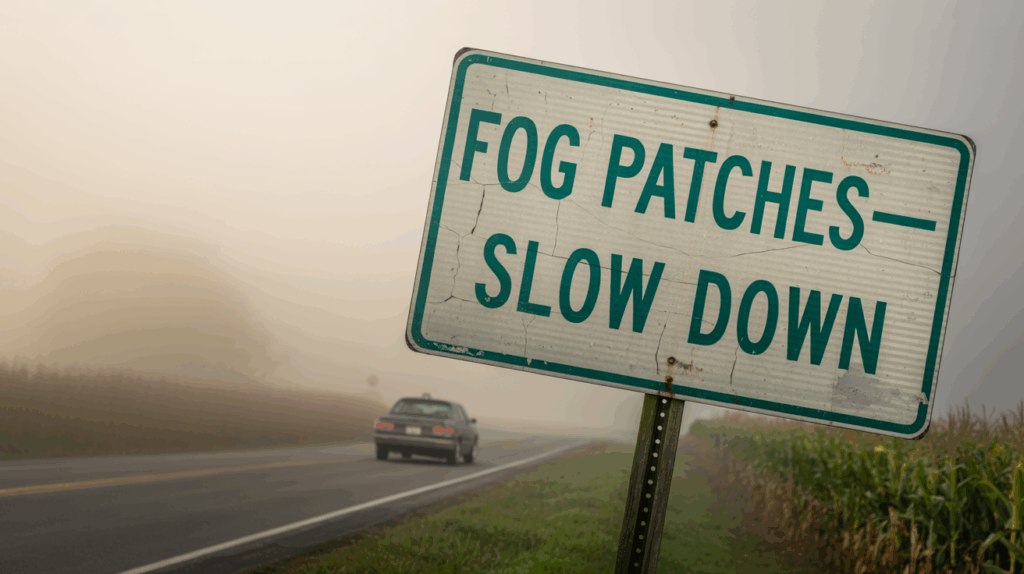
Why Fog is Common in September
September marks the beginning of seasonal transitions in Indiana. As the hot summer days give way to cooler nights, the air near the ground cools rapidly, often reaching the dew point. When this happens, water vapor condenses and forms fog — especially in the early morning hours. Areas near lakes, rivers, and open farmland are particularly prone to fog formation.
For drivers, this means unpredictable visibility that can vary from one block to the next. It’s not only frustrating but also hazardous if proper precautions aren’t taken.
How Fog Affects Driver Visibility
Fog can drastically reduce visibility, often to less than a quarter-mile. It diffuses light, making headlights appear less effective and making it more difficult to judge distances between vehicles. Combined with damp road surfaces, the risk of collisions increases significantly. Knowing how to properly prepare your vehicle and adjust your driving habits can make all the difference.
Top 7 Visibility Tips for Foggy Conditions
1. Use Low-Beam Headlights
High-beam headlights reflect off fog particles and reduce visibility even further. Instead, always use low-beam headlights or fog lights, which are angled downward and designed to cut through fog.
2. Keep Your Windshield Clear
A clean windshield is essential for safe driving in any weather — especially fog. Dirt, streaks, and smudges can amplify glare. Make sure your windshield is clean inside and out. Also, check your wiper blades and washer fluid regularly to ensure optimal performance.
3. Use Your Defroster and Wipers
Fog often leads to condensation on the windshield. Activate your vehicle’s defroster to clear interior fog, and use your windshield wipers to handle exterior moisture. This helps maintain maximum clarity at all times.
4. Slow Down and Increase Following Distance
Reduced visibility requires more reaction time. Drive slower than usual and leave extra space between your car and the one in front. This allows you to respond safely to sudden stops or obstacles.
5. Avoid Sudden Stops and Lane Changes
In fog, it’s harder for other drivers to see your movements. Signal early, brake gradually, and avoid sudden maneuvers. Keeping your driving predictable reduces the chance of accidents.
6. Follow Roadway Markings
When visibility is poor, rely on the painted road lines to guide you. Keep your eyes focused on the right edge of the road to avoid being distracted by oncoming headlights or drifting out of your lane.
7. Don’t Use Hazard Lights While Driving
Some drivers mistakenly turn on their hazard lights in foggy conditions. This can be confusing to other motorists and is typically reserved for stopped or emergency situations. Stick to your headlights and fog lights instead.
How Auto Glass Affects Visibility
Even the most cautious driver can be at risk if their auto glass is damaged or poorly maintained. Chips, cracks, and pitting can scatter light and worsen glare — a serious issue when driving through fog. At Hammond Auto Glass, we recommend addressing any windshield damage promptly to ensure you have a clear line of sight in all conditions.
Prepare Now for Safer Fall Driving
September fog is a seasonal hazard Indiana drivers can’t avoid — but you can prepare for it. Make fog safety part of your fall vehicle checklist: inspect your windshield, replace old wipers, top off washer fluid, and ensure your headlights and defrosters are working correctly. If you notice visibility issues related to windshield damage, don’t wait.
Contact us to schedule a professional windshield inspection or auto glass repair today. Our team is here to help you drive safely, no matter the forecast.
